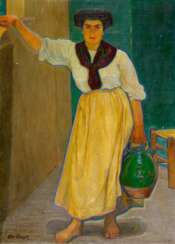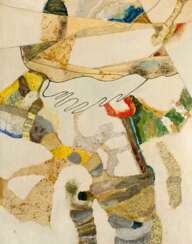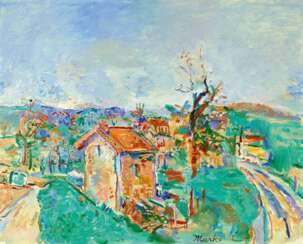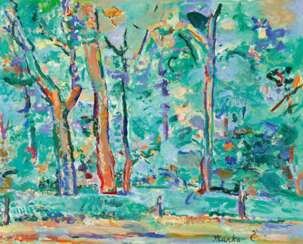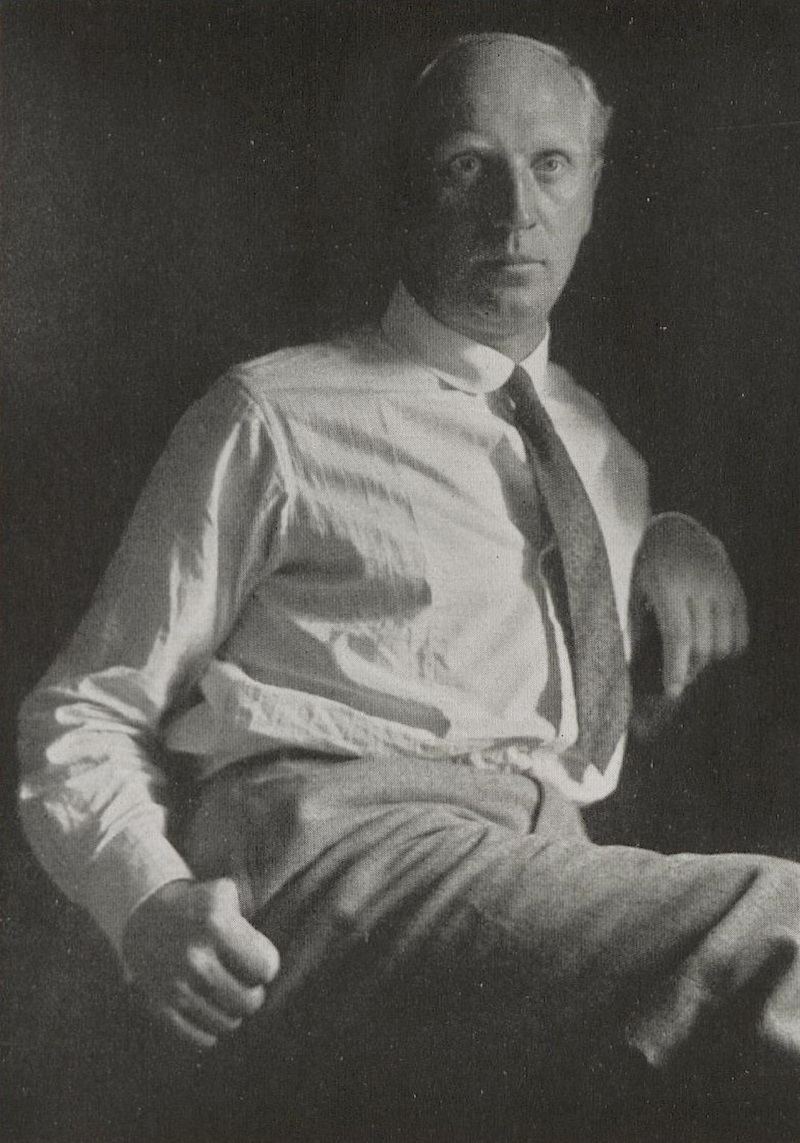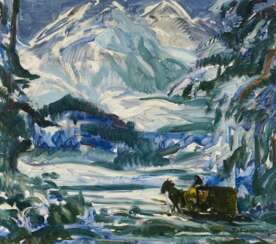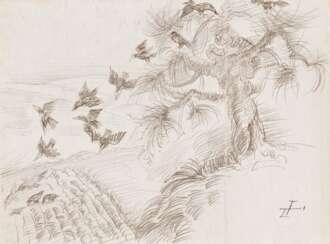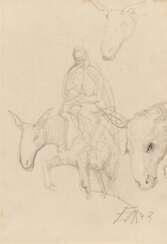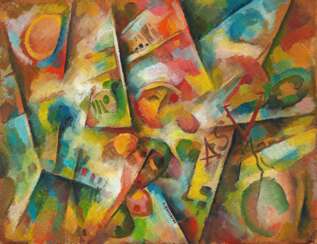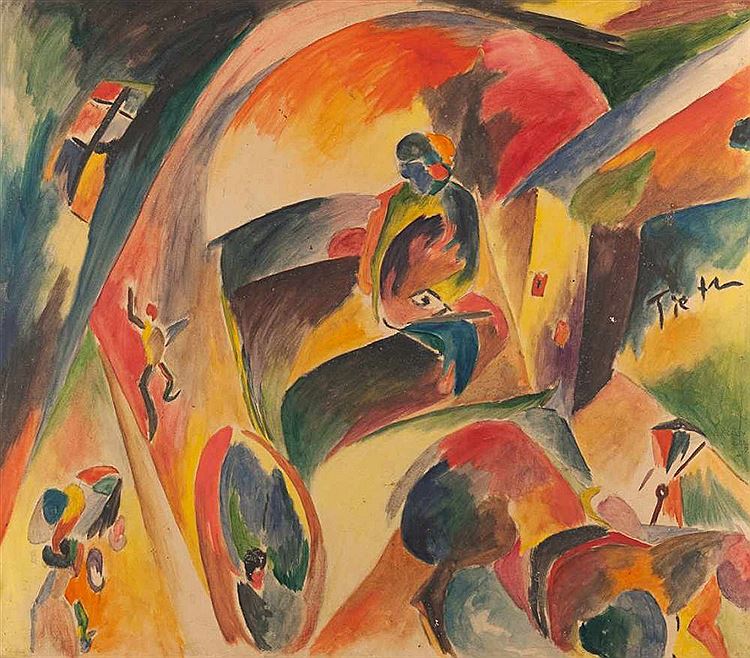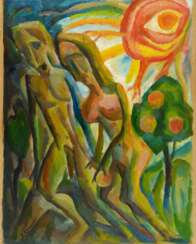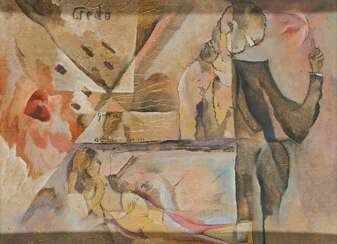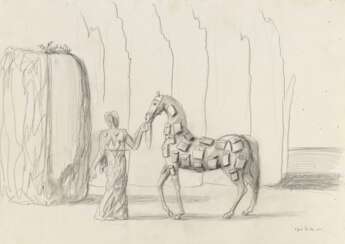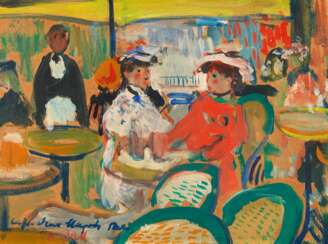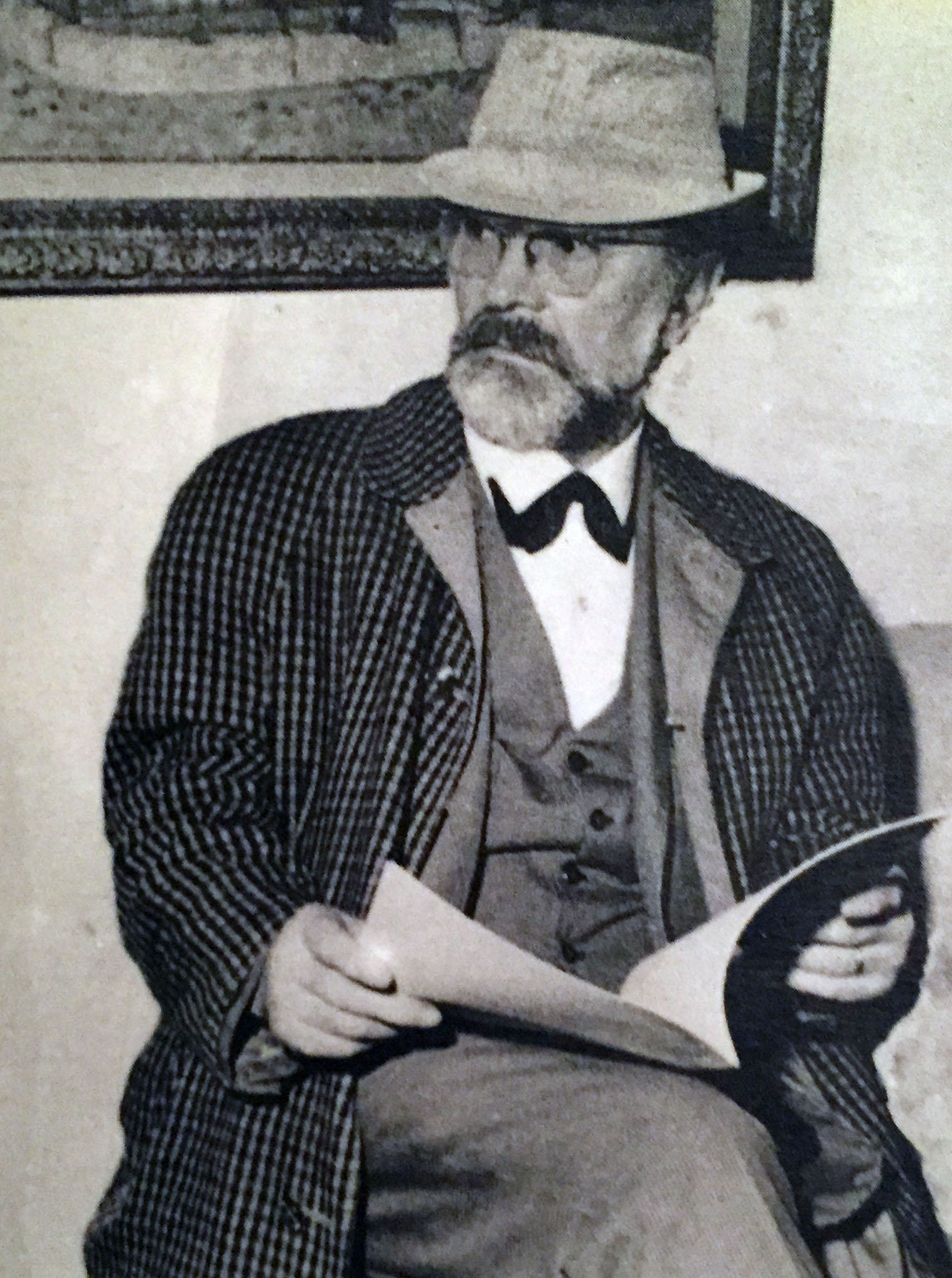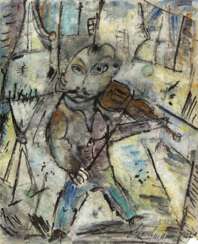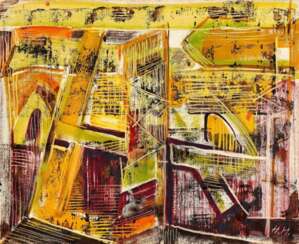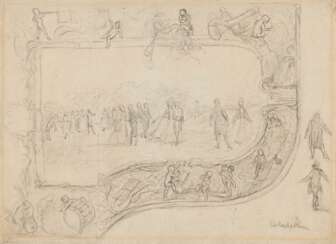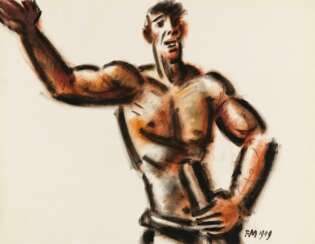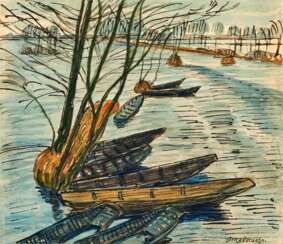
Modern paintings, drawings, watercolours — Contemporary

Carl Buchheister was a German constructivist artist noted for his multiple series of "model paintings"at Galerie Lambert Weyl, Paris. which he began in 1925. He was born in Hanover, Germany. Although he was not officially part of the Bauhaus movement, Buchheister was a close friend of Wassily Kandinsky and paralleled many of the social and artistic goals of the Bauhaus school. With regard to constructivism, Buchheister was typically more playful and improvisational than his contemporaries, becoming interested in the Dada movement after a collaboration with Kurt Schwitters in the late 1920s which led him to incorporate more varied materials such as acrylic glass, aluminum, wood, and twine into his compositions. This direction was given much freer rein after World War II and the end of Nazism. He died in Hanover in 1964.
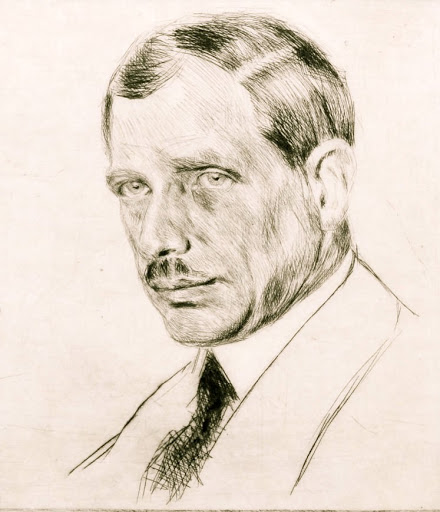
Max Clarenbach was a German painter of the first half of the twentieth century. He is known as a painter, landscape painter, genre painter and teacher and is considered one of the most important representatives of Rhenish painting of his time.
Max Clarenbach made study trips to Italy and Holland early in his career, where he formed his genre preferences and became a landscape painter. His work reflected the influence of the Hague School and the French Barbizonians. The artist skillfully depicted winter scenes and the nature of western Germany. He also painted sports and street scenes.
Clarenbach was one of the organizers of the Düsseldorf Sonderbund and taught at the Düsseldorf Academy of Art.

Wilhelm Heinrich Otto Dix was a German artist whose work stands as a stark, unyielding reflection of the societal tumult and trauma of the early 20th century. Born in 1891 in Untermhaus, Germany, Dix's early life was steeped in the arts, his ambition to become an artist nurtured by both familial influence and formal education in Dresden. His experiences as a soldier in World War I deeply influenced his artistic direction, leading him to vividly depict the horrors of war and the decay of the Weimar Republic with a brutal realism that became his signature style.
Dix's association with the Dada movement and the New Objectivity (Neue Sachlichkeit) further honed his critical, often cynical portrayal of post-war society. His works, such as "The Trench" and "War Cripples," expose the visceral aftermath of conflict, while his engagement with the Dadaists imbued his art with a disruptive, confrontational energy against societal norms and the art establishment.
Perhaps most notable is Dix's ability to capture the psychological depth and societal critiques through his portraits and landscapes, which ranged from the grotesque to the surreal. Paintings like "Portrait of the Journalist Sylvia von Harden" and the triptychs "Metropolis" and "War" are emblematic of his keen observation and stark depiction of the era's social and political unrest.
Despite facing significant adversity, including being labeled a degenerate artist by the Nazi regime and facing professional and personal setbacks, Dix's legacy as a painter and printmaker endures. His works are not only historical documents but also profound reflections on humanity, war, and society, resonating with collectors and art experts alike.
For enthusiasts of culture, art, and history, Dix's oeuvre offers an unflinching look into the human condition under the strain of societal and political upheaval. His contributions to painting and printmaking continue to be celebrated in museums and galleries worldwide, underscoring the enduring relevance of his work.
For those interested in exploring the profound depth and historical significance of Otto Dix's work, signing up for updates on new product sales and auction events related to his art can provide invaluable insights. This subscription is a gateway to staying informed about opportunities to engage with the tangible pieces of Dix's enduring legacy.

Wilhelm Heinrich Otto Dix was a German artist whose work stands as a stark, unyielding reflection of the societal tumult and trauma of the early 20th century. Born in 1891 in Untermhaus, Germany, Dix's early life was steeped in the arts, his ambition to become an artist nurtured by both familial influence and formal education in Dresden. His experiences as a soldier in World War I deeply influenced his artistic direction, leading him to vividly depict the horrors of war and the decay of the Weimar Republic with a brutal realism that became his signature style.
Dix's association with the Dada movement and the New Objectivity (Neue Sachlichkeit) further honed his critical, often cynical portrayal of post-war society. His works, such as "The Trench" and "War Cripples," expose the visceral aftermath of conflict, while his engagement with the Dadaists imbued his art with a disruptive, confrontational energy against societal norms and the art establishment.
Perhaps most notable is Dix's ability to capture the psychological depth and societal critiques through his portraits and landscapes, which ranged from the grotesque to the surreal. Paintings like "Portrait of the Journalist Sylvia von Harden" and the triptychs "Metropolis" and "War" are emblematic of his keen observation and stark depiction of the era's social and political unrest.
Despite facing significant adversity, including being labeled a degenerate artist by the Nazi regime and facing professional and personal setbacks, Dix's legacy as a painter and printmaker endures. His works are not only historical documents but also profound reflections on humanity, war, and society, resonating with collectors and art experts alike.
For enthusiasts of culture, art, and history, Dix's oeuvre offers an unflinching look into the human condition under the strain of societal and political upheaval. His contributions to painting and printmaking continue to be celebrated in museums and galleries worldwide, underscoring the enduring relevance of his work.
For those interested in exploring the profound depth and historical significance of Otto Dix's work, signing up for updates on new product sales and auction events related to his art can provide invaluable insights. This subscription is a gateway to staying informed about opportunities to engage with the tangible pieces of Dix's enduring legacy.
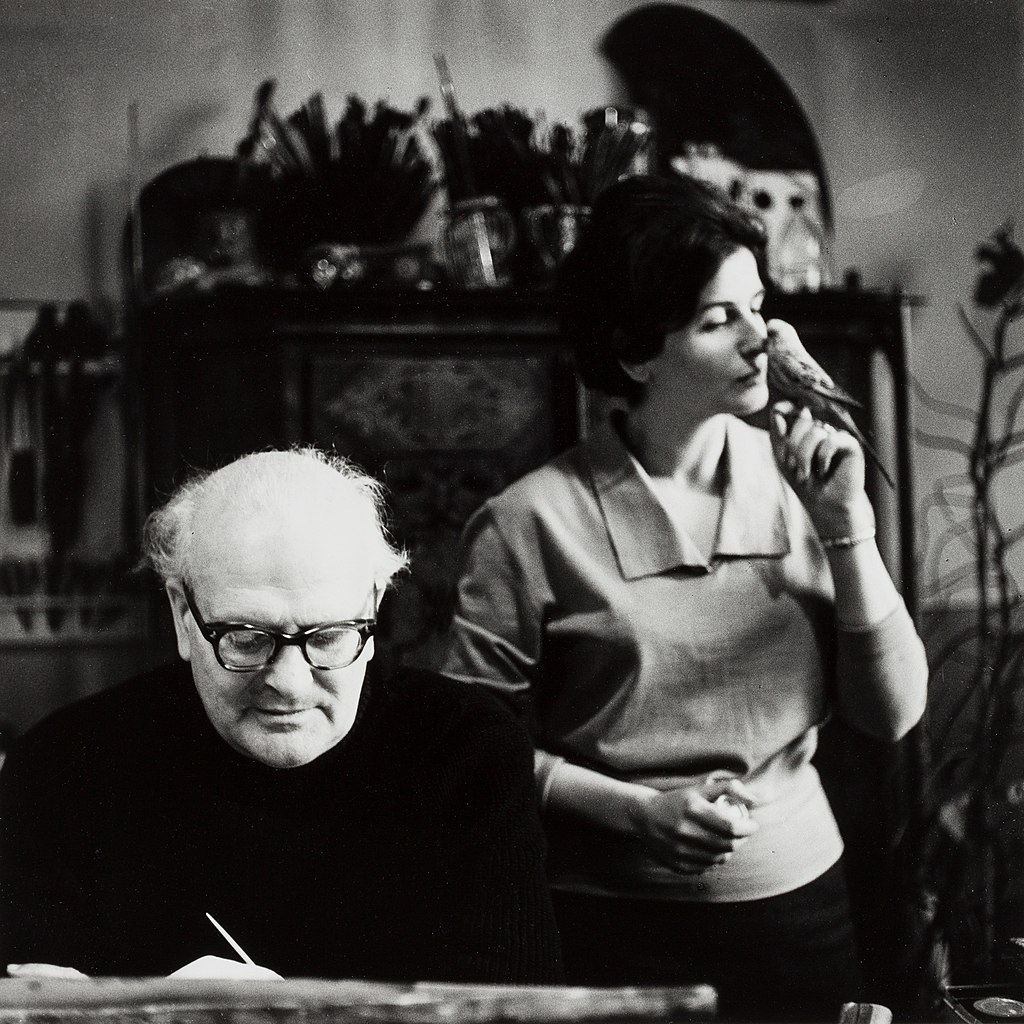
Edgar Carl Alfons Ende was a German surrealist painter, father of children's author Michael Ende and member of the Munich Secession.
Edgar Ende's work belongs to the tradition of fantasy and visionary art, and is considered one of the most important contributions of twentieth-century German painting to this style.
By the end of 1936 his paintings were considered 'degenerate art', and his work and exhibitions were banned by the Nazi regime. After the end of the war, Edgar Ende was one of the co-founders of the professional association of Munich artists, and for the first time participated in the Venice Biennale.
Since 1963 he has been an honorary member of the Academy of Fine Arts in Munich.

Edgar Carl Alfons Ende was a German surrealist painter, father of children's author Michael Ende and member of the Munich Secession.
Edgar Ende's work belongs to the tradition of fantasy and visionary art, and is considered one of the most important contributions of twentieth-century German painting to this style.
By the end of 1936 his paintings were considered 'degenerate art', and his work and exhibitions were banned by the Nazi regime. After the end of the war, Edgar Ende was one of the co-founders of the professional association of Munich artists, and for the first time participated in the Venice Biennale.
Since 1963 he has been an honorary member of the Academy of Fine Arts in Munich.

Edgar Carl Alfons Ende was a German surrealist painter, father of children's author Michael Ende and member of the Munich Secession.
Edgar Ende's work belongs to the tradition of fantasy and visionary art, and is considered one of the most important contributions of twentieth-century German painting to this style.
By the end of 1936 his paintings were considered 'degenerate art', and his work and exhibitions were banned by the Nazi regime. After the end of the war, Edgar Ende was one of the co-founders of the professional association of Munich artists, and for the first time participated in the Venice Biennale.
Since 1963 he has been an honorary member of the Academy of Fine Arts in Munich.

Edgar Carl Alfons Ende was a German surrealist painter, father of children's author Michael Ende and member of the Munich Secession.
Edgar Ende's work belongs to the tradition of fantasy and visionary art, and is considered one of the most important contributions of twentieth-century German painting to this style.
By the end of 1936 his paintings were considered 'degenerate art', and his work and exhibitions were banned by the Nazi regime. After the end of the war, Edgar Ende was one of the co-founders of the professional association of Munich artists, and for the first time participated in the Venice Biennale.
Since 1963 he has been an honorary member of the Academy of Fine Arts in Munich.
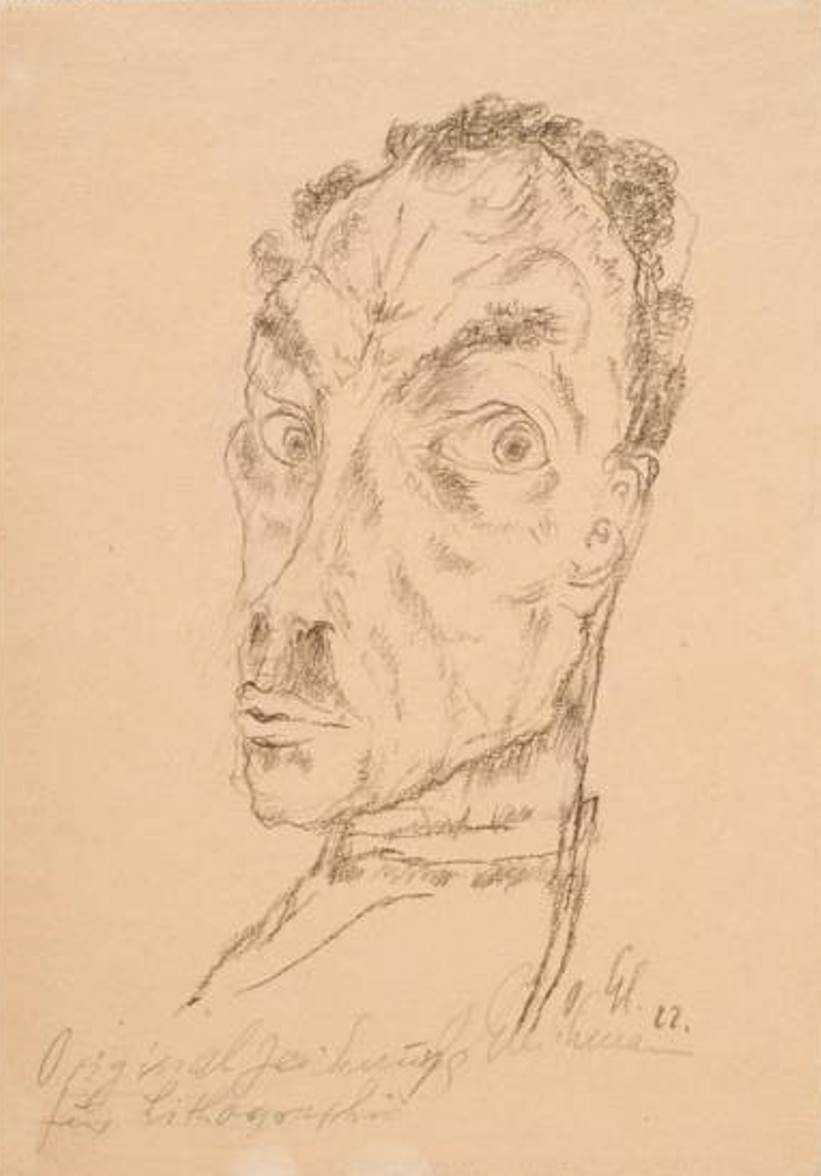
Otto Gleichmann is a German artist, a bright representative of German Expressionism.
Otto Gleichmann studied at art academies in Düsseldorf, Breslau and Weimar. While in the army during World War I, he was wounded and absorbed the beliefs of the viciousness of National Socialism. In 1918, together with his wife, he joined the Hanover Secession group of artists and painted expressionist oil paintings, watercolors, drawings, lithographs, and mixed media works, the subjects of which were influenced in particular by his wartime experiences and impressions.
In 1937, Gleichmann's watercolors and prints were confiscated by the National Socialists from state collections as part of the "Degenerate Art" campaign, and most were destroyed.

Otto Gleichmann is a German artist, a bright representative of German Expressionism.
Otto Gleichmann studied at art academies in Düsseldorf, Breslau and Weimar. While in the army during World War I, he was wounded and absorbed the beliefs of the viciousness of National Socialism. In 1918, together with his wife, he joined the Hanover Secession group of artists and painted expressionist oil paintings, watercolors, drawings, lithographs, and mixed media works, the subjects of which were influenced in particular by his wartime experiences and impressions.
In 1937, Gleichmann's watercolors and prints were confiscated by the National Socialists from state collections as part of the "Degenerate Art" campaign, and most were destroyed.

Otto Gleichmann is a German artist, a bright representative of German Expressionism.
Otto Gleichmann studied at art academies in Düsseldorf, Breslau and Weimar. While in the army during World War I, he was wounded and absorbed the beliefs of the viciousness of National Socialism. In 1918, together with his wife, he joined the Hanover Secession group of artists and painted expressionist oil paintings, watercolors, drawings, lithographs, and mixed media works, the subjects of which were influenced in particular by his wartime experiences and impressions.
In 1937, Gleichmann's watercolors and prints were confiscated by the National Socialists from state collections as part of the "Degenerate Art" campaign, and most were destroyed.
.jpg)
Hannah Höch was a German Dada artist. She is best known for her work of the Weimar period, when she was one of the originators of photomontage. Photomontage, or fotomontage, is a type of collage in which the pasted items are actual photographs, or photographic reproductions pulled from the press and other widely produced media.
Höch's work was intended to dismantle the fable and dichotomy that existed in the concept of the "New Woman": an energetic, professional, and androgynous woman, who is ready to take her place as man's equal. Her interest in the topic was in how the dichotomy was structured, as well as in who structures social roles.
Other key themes in Höch's works were androgyny, political discourse, and shifting gender roles. These themes all interacted to create a feminist discourse surrounding Höch's works, which encouraged the liberation and agency of women during the Weimar Republic (1919-1933) and continuing through to today.
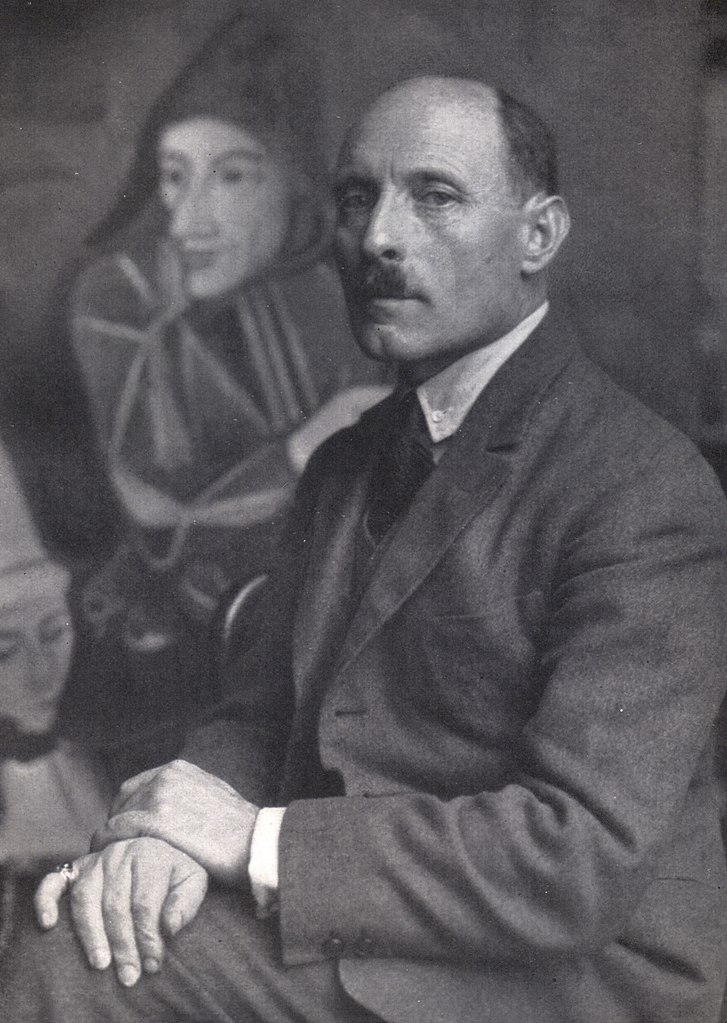
Karl Hofer was a German expressionist painter. He was director of the Berlin Academy of Fine Arts.
One of the most prominent painters of expressionism, he never was a member of one of the expressionist painting groups, like "Die Brücke", but was influenced by their painters. His work was among those considered degenerate art by the Nazis, but after World War II he regained recognition as one of the leading German painters.
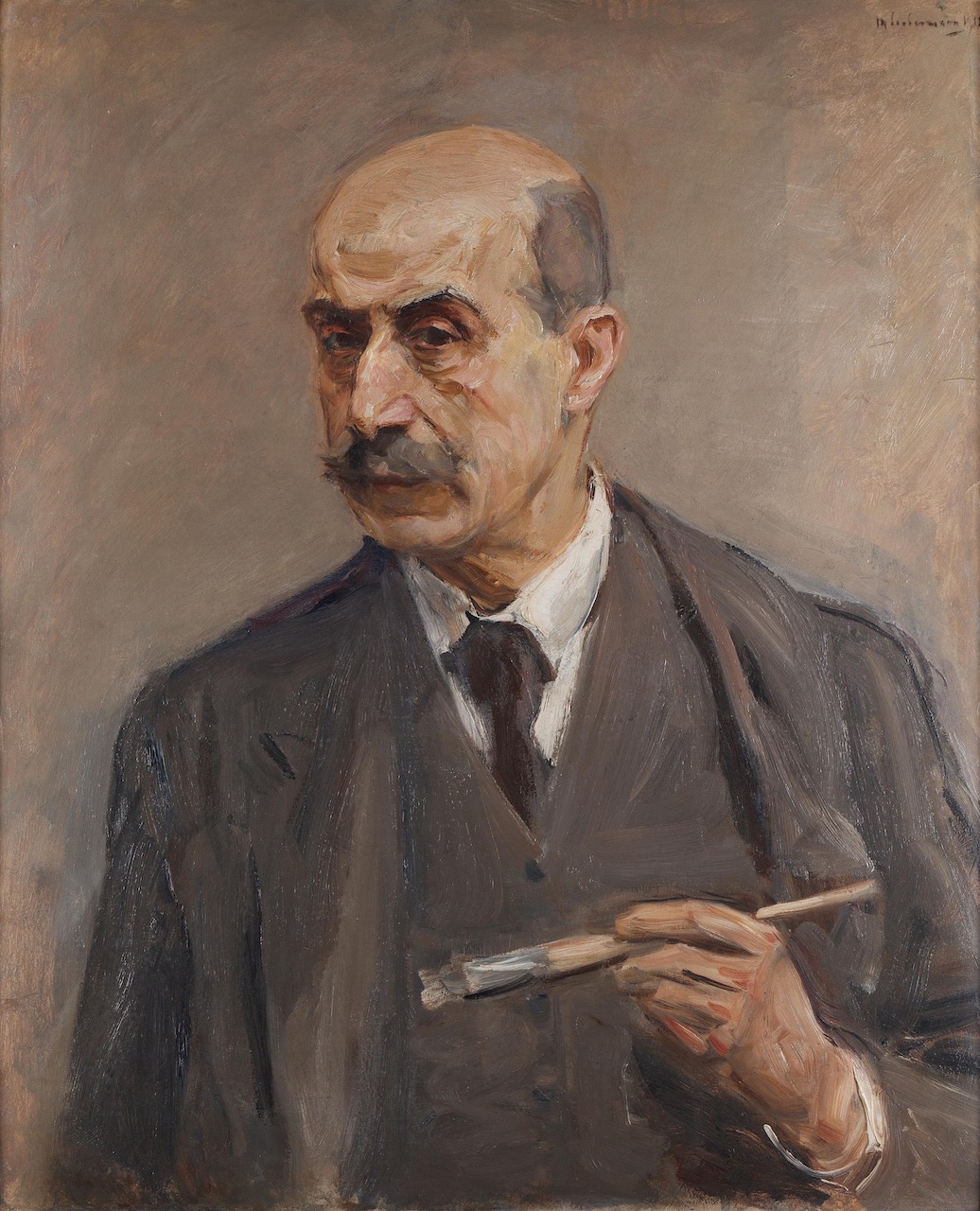
Max Liebermann was a German painter and printmaker, and one of the leading proponents of Impressionism in Germany and continental Europe. In addition to his activity as an artist, he also assembled an important collection of French Impressionist works.
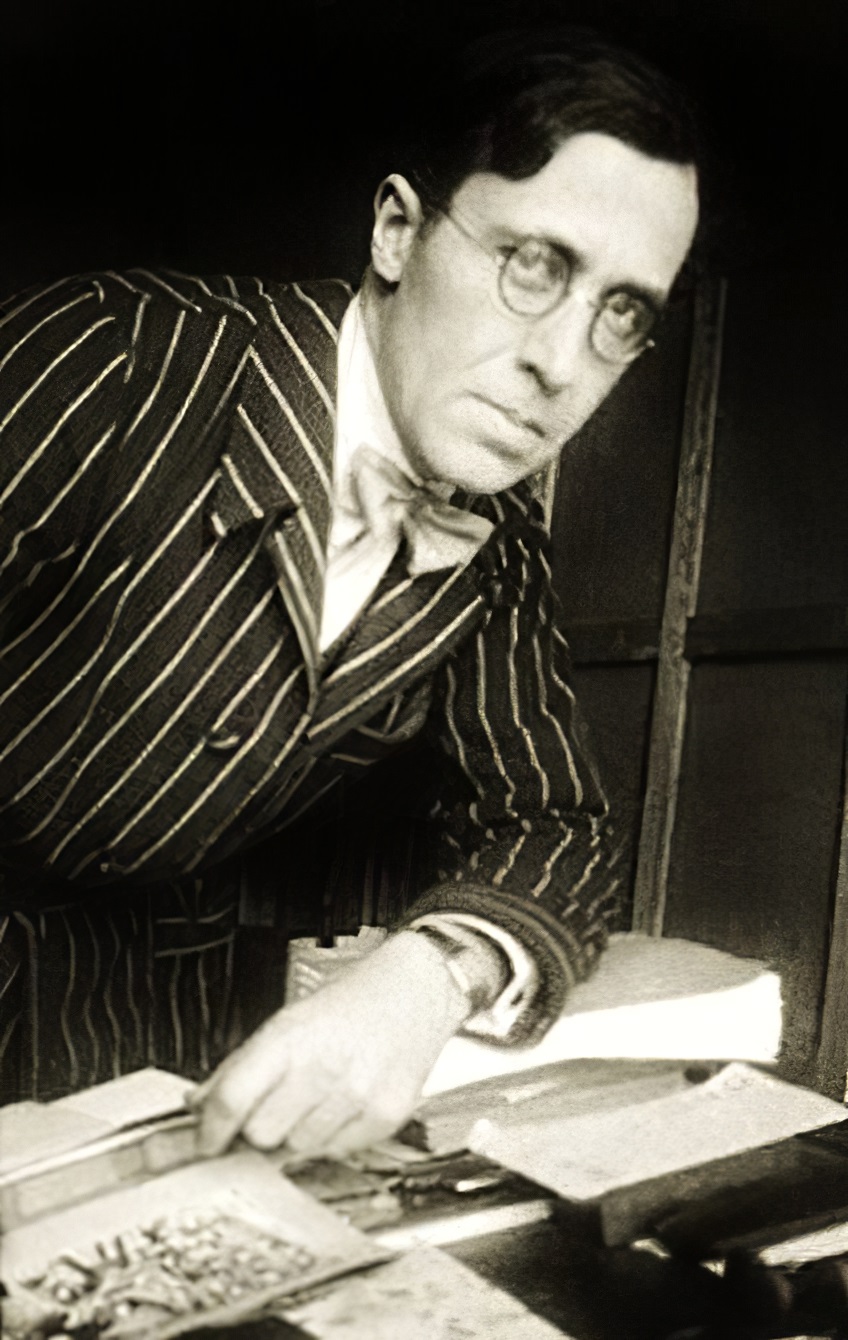
Frans Masereel was a Flemish painter and graphic artist who worked mainly in France, known especially for his woodcuts focused on political and social issues, such as war and capitalism. He completed over 40 wordless novels in his career, and among these, his greatest is generally said to be Passionate Journey.
Masereel's woodcuts influenced Lynd Ward and later graphic artists such as Clifford Harper, Eric Drooker, and Otto Nückel.

Frans Masereel was a Flemish painter and graphic artist who worked mainly in France, known especially for his woodcuts focused on political and social issues, such as war and capitalism. He completed over 40 wordless novels in his career, and among these, his greatest is generally said to be Passionate Journey.
Masereel's woodcuts influenced Lynd Ward and later graphic artists such as Clifford Harper, Eric Drooker, and Otto Nückel.
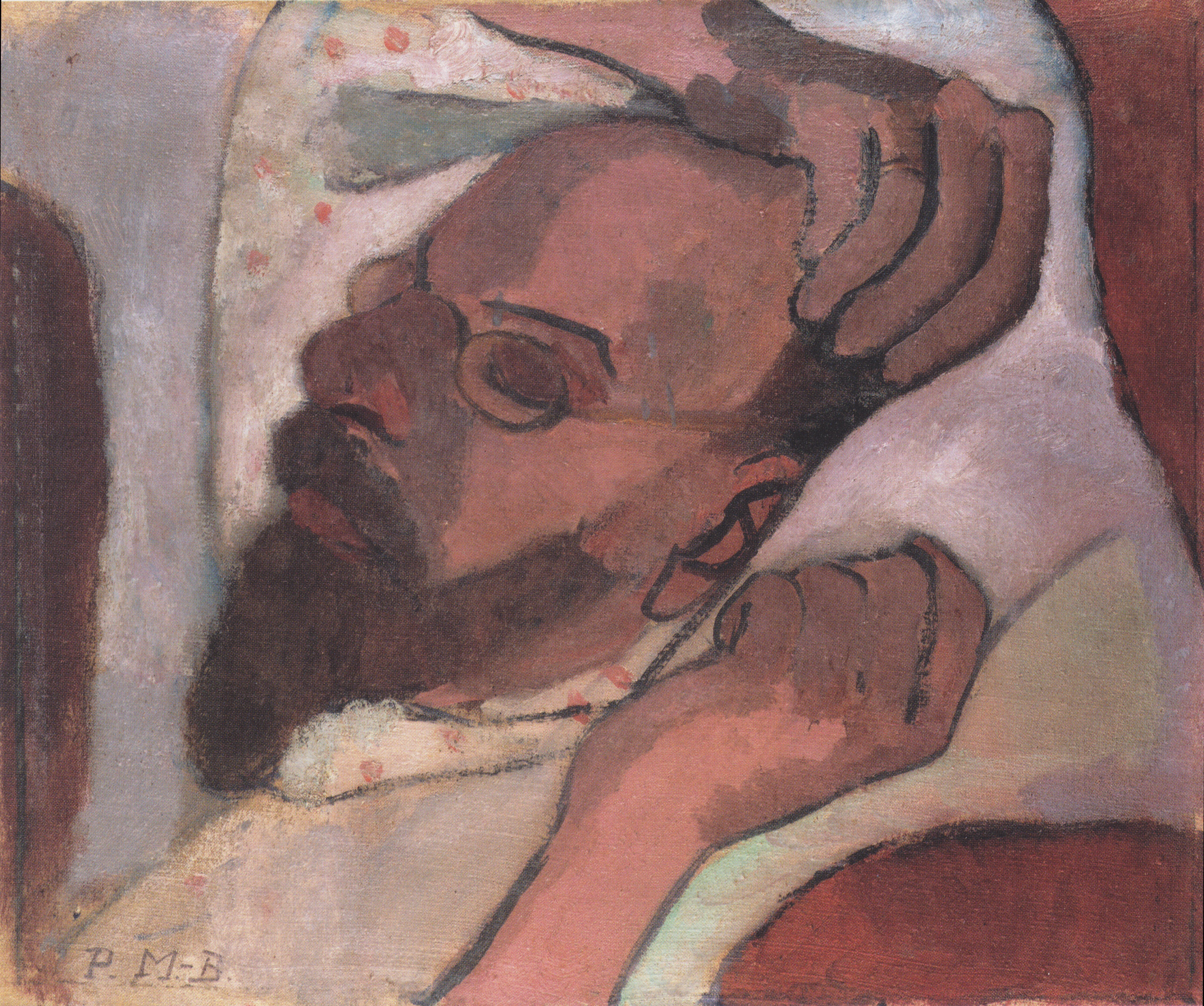
Friedrich Wilhelm Otto Modersohn was a German painter of the late 19th and first half of the 20th centuries. He is known as a landscape painter, a representative of the Barbizon School.
Otto Modersohn produced Barbizonian-style landscapes early in his career, but from about 1890 his style became more expressionist, with an emphasis on his choice of colors. The death of his second wife influenced his style: the colors became darker and the images more stark. Modersohn was one of the founders of the Worpswede artists' colony. A large collection of his works is kept in the Modersohn Museum in Fischerhude, and a street in Berlin is also named after him.
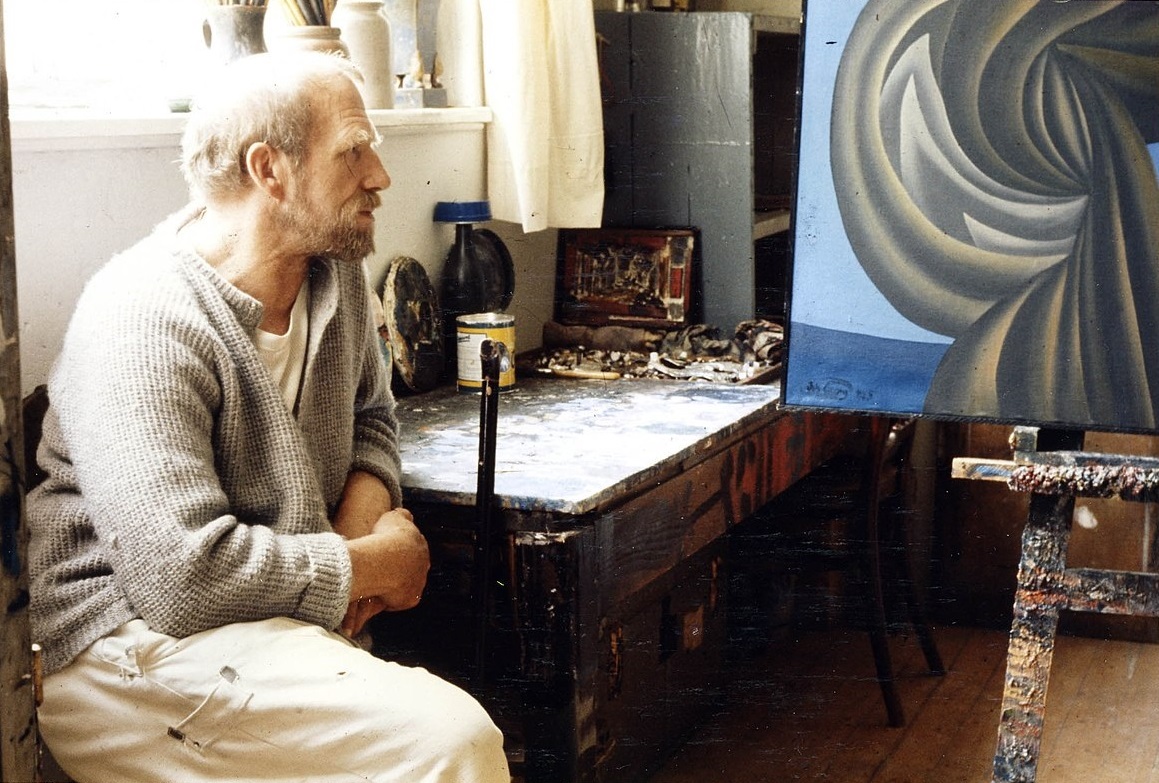
Johann Georg Müller was a German painter and graphic artist. He was studied at the Academy of Fine Arts in Munich.
Müller's work was heavily influenced by the Expressionist and Surrealist movements, and his paintings and graphic works often featured bold colors and abstract, dreamlike imagery. He was known for his use of symbolic motifs and his interest in mythological and religious themes.
During World War II, Müller was drafted into the German army and served on the Eastern Front. After the war, he returned to Munich and resumed his artistic career. He became a member of the German Expressionist group "Die Neue Gruppe" and participated in several exhibitions throughout Europe.
His work continues to be exhibited and studied around the world, and his legacy has had a significant impact on the development of modern and contemporary art in Germany and beyond.
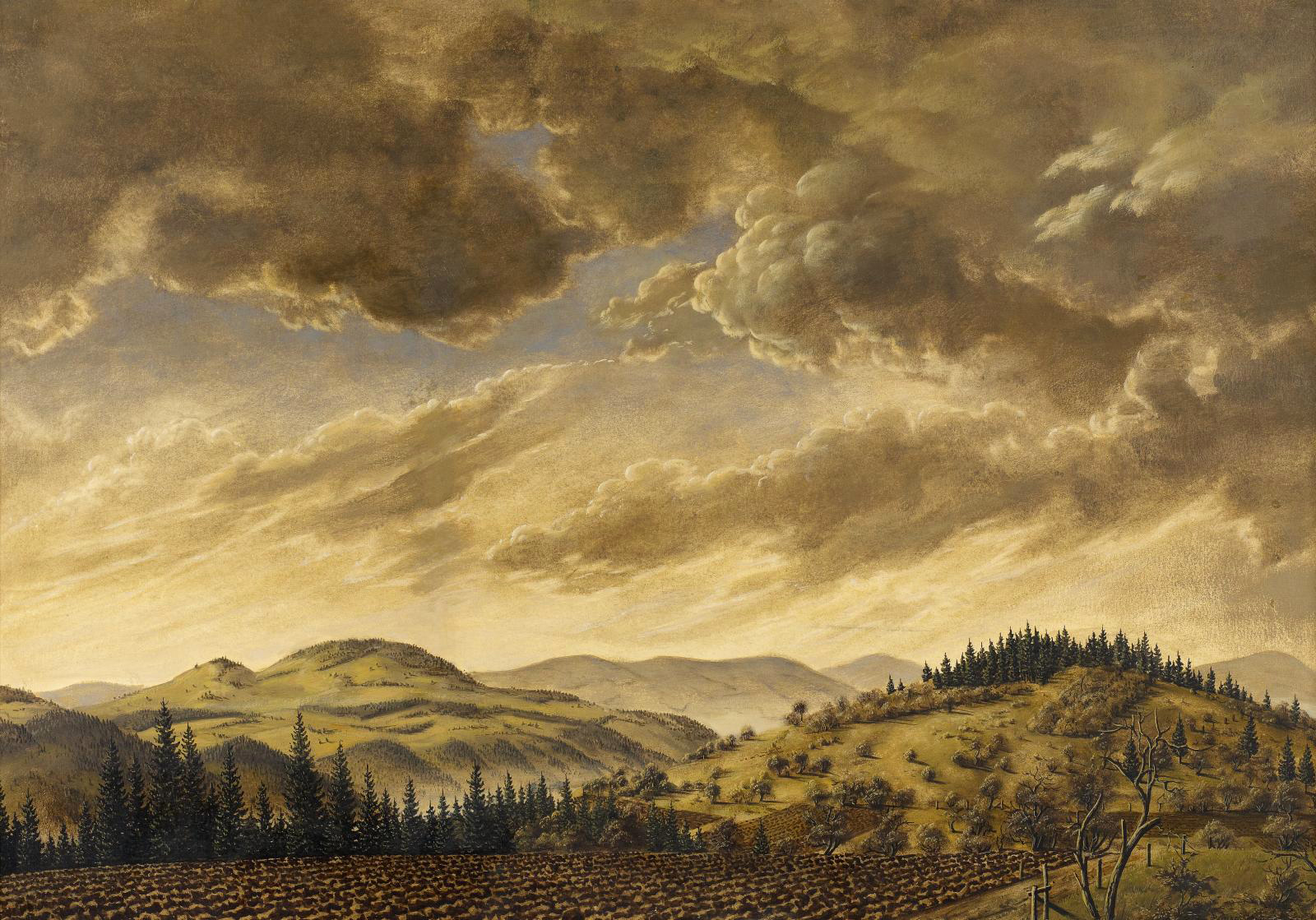
Werner Peiner was a German painter. He was first influenced by realism, and later by New Objectivity, but he would become known has one of the most talented official painters of the Third Reich.
